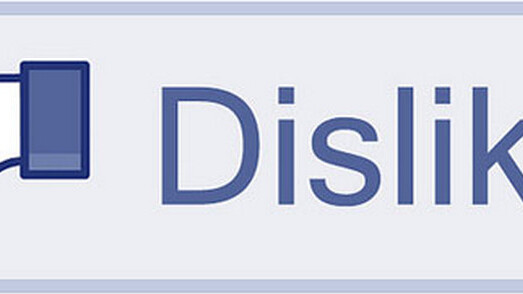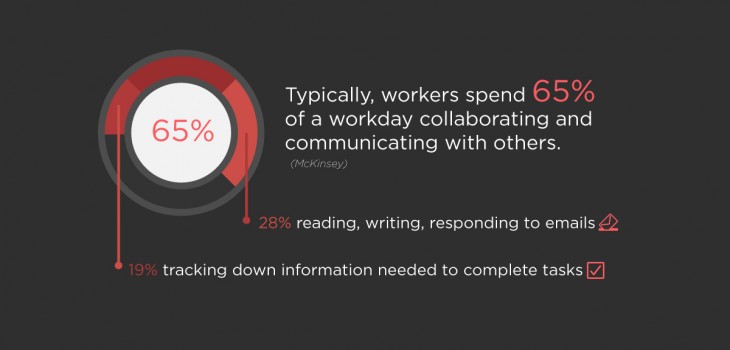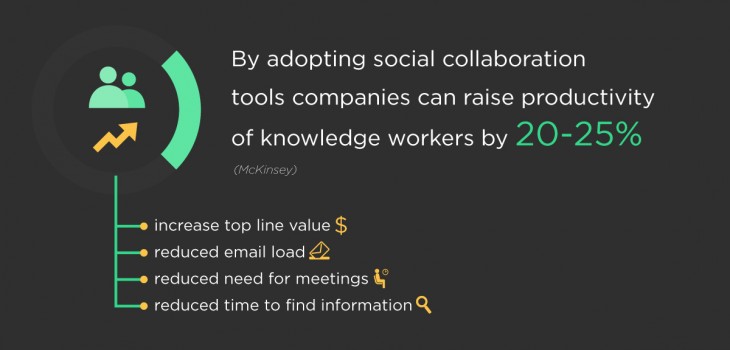
David Arnoux is Head of Growth and co-founder of Twoodo, helping teams organize using simple #hashtags. This post originally appeared on the Twoodo blog.
We can stop arguing that only young people use social media: the average across all age groups is 72 percent (with 30 – 49 year olds also at 72 percent in their own right). So, not only are employees using it but so are (probably) most of your customers.
It can be leveraged both ways to improve access to information, have discussions and allow for more accountability. But what about those who don’t like social media, and by extension, social collaboration tools? There is a massive assumption that we all enjoy or are comfortable with using social media in professional settings:
Collaborative working environments support learning in these informal learning spaces driving social engagement primarily amongst generation Y-employees who are fully conversant with the capabilities of social media.
Have we considered the collaborative problems associated with introverts, and others? Social media is something people are ‘forced’ to join in order to be included in many interest groups, local and private events, and so on. It’s not always ‘opting in’ because you personally came to the conclusion your life would be better with Facebook than without.
Social collaboration challenges the behavior of both extroverts and introverts, for those who require instant social gratification and those who like to remain unnoticed.
There are also people who just simply prefer not to be social, which is also fine but an oft-forgotten fact. Or take it to the extreme, and you have people on social networks specifically to use apps not to meet people! Gotta love the irony.
Action #1: find out which social media platform your team/employees favor the most; it may indicate the best style of collaboration tool for you to implement.
Collaborative problems #1: not everyone wants to be social
It is expected that up to 40 percent of jobs will be virtual by 2015, so teams are going to have to research the best tool(s) for themselves. And this is no surprise when you realize the impact social collaboration tools can have on your company. This list of statistics and trends says it all.
How are the introverts going to be included? How are the skeptics of social networks going to be engaged?
Here were the top problems with implementing social collaboration strategies in 2013:

Many resources are being invested in social collaboration by large business (and soon SMEs) – but, the execution is dismal.
The reasons for this failure is a) not understanding how your team works so therefore, b) choosing the wrong platform or service and, c) not having a company culture where social is openly accepted…
…all essential ingredients to enable social collaboration and remote working to reach its full potential.
Action #2: search for a tool that suits the way your team’s tasks need to be organized – whether it be generalized goals, daily recurring tasks or sprints with multiple issues to deal with.
Collaborative problems #2: social anxiety – could social collaboration tools hurt your team?
I’ve worked in startups and SMEs for over 10 years now. Saying whatever I want to my colleagues comes naturally when we use the collaboration tool we are building.
But what about an organization of hundreds or thousands of people? People are cautious to speak freely in larger organizations where they don’t know each person. They are aware of consequences of rubbing someone up the wrong way, personality-wise.
So could a social collaboration tool actually act as a gag mechanism rather than a speakerphone?
Or would it actually encourage employees to be more considerate about how they express themselves? Do social tools actually make it easier for the shy ones in the group to thoughtfully respond on their own terms, rather than be put on the spot in a meeting? There could be many psychological blockers unclear to the more easygoing types in the team.
It is risky to show people your unfinished thoughts. Technologies for a long time could let you do that; people did not always do that. Social software, to the extent that it is helping people build trust and be comfortable with more casual, lightweight communications, could make it possible for more of our attempts at collaboration to be real collaboration. – Technology Review
It also goes deeper than that. People have been found not to represent themselves honestly on social media – rather, what they think is the best/ideal version of themselves.
So whilst social collaboration aims to bring teams closer together, it may surprise you just how differently people will act online and offline. Whether this is a good or bad thing in work environment is hard to tell at the moment.
Then there are the deeper social psychological issues of a social network. This study on the effects of ‘unfriending’ in social networks found that the more loosely connected people were, the less likely they were to have significant relationship failures down the line.
So it could mean that in order for companies to get the best out of social tools and their teams, an ‘arm’s length’ approach rather than ‘getting actively involved’ may be the more harmonious option.
Relationship management is hard, especially when you don’t really know the temperament of the person you are dealing with. Up to 18 percent of the USA alone suffers from some form of anxiety disorder – significant if you are trying to understand the consequences of going 100 percent social without proper preparation.
Action #3: don’t force people to change their habits – if the team normally tells each other what they have achieved on a weekly basis, keep that going; if they share GIFs frequently, let it happen; if they simply contact each other about tasks, let it be.
Psychological Science points out that studies on how people build social networks and create social relationships are hugely skewed towards people who are already excellent at establishing such relationships.
What we are left with is very little actionable information with which to understand social processes between introverted, shy or anxious people.
In other words, there is little evidence available to really explain collaborative problems. Managers need to remember this next time they are reading up on studies of social media and social collaboration in the workplace.
There are many benefits to social collaboration – reducing email; recording exchanges between colleagues; capturing ideas on the fly; nurturing team spirit; enabling teams to cross barriers of department and hierarchy. Understand the team. Take your time to get the right tool.
Take a leap and be the first one to use it regularly to encourage the crossover. Don’t just buy into one to keep up with the Joneses!
Read next: The science of collaboration: How to optimize working together
Get the TNW newsletter
Get the most important tech news in your inbox each week.








